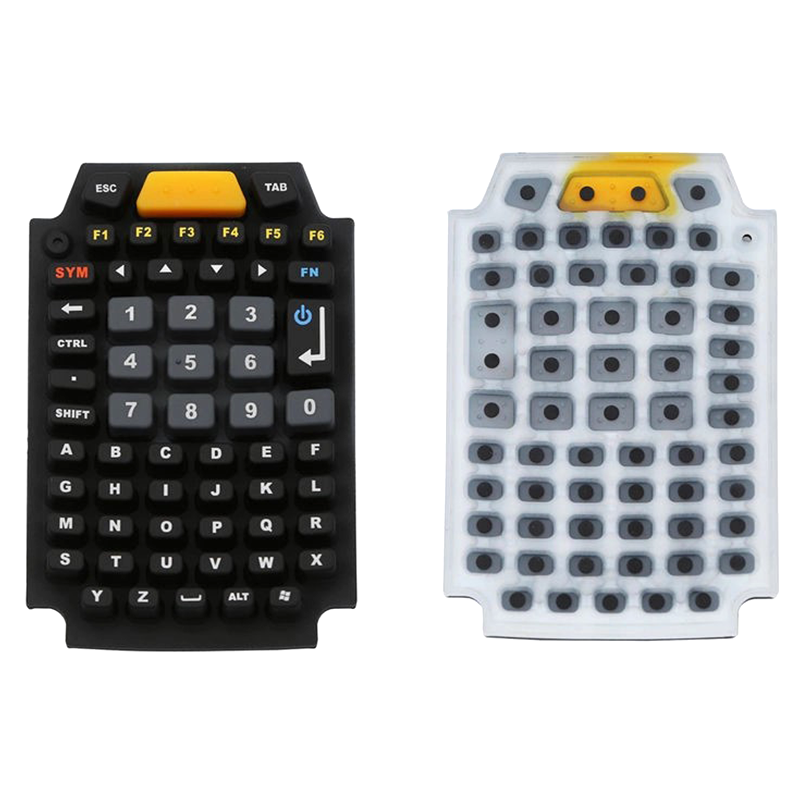When designing products that feature silicone rubber keyboards, investing time in prototyping before finalizing your design can significantly enhance the outcome. Widely utilized across various sectors—including consumer electronics, automotive, medical devices, and industrial machinery—silicone rubber keyboards provide numerous advantages, such as exceptional durability, flexibility, and resistance to environmental challenges. However, to ensure your product aligns with specific requirements and user expectations, effective prototyping is crucial. In this blog, we will delve into the many benefits of prototyping silicone rubber keyboards and how it can elevate your product development process.

In the realm of product design, especially when incorporating silicone rubber keyboards, the significance of prototyping cannot be overstated. Prototyping serves as a vital stage in the development cycle, allowing designers and engineers to validate their concepts before they go into full-scale production. Silicone rubber keyboards find applications across diverse industries such as consumer electronics, automotive, medical devices, and industrial machinery. They offer unique advantages like exceptional durability, flexibility, and resistance to environmental conditions. However, to ensure that your product fulfills specific requirements and meets user expectations, effective prototyping is essential. This article explores the myriad benefits of prototyping silicone rubber keyboards and highlights how Flykeyboard can support your prototyping needs.
Design Validation
Prototyping is crucial for early design validation of your keyboard. It provides the opportunity to physically test the aesthetic and functional attributes of the keyboard. Through the creation of a prototype, you can assess whether the design meets specifications such as dimensions, shape, and tactile feedback. This validation process helps identify potential flaws or issues that could escalate into costly problems during manufacturing. By catching these concerns early, you can make necessary adjustments, ensuring a smoother transition to production.
User Experience Testing
User experience is a cornerstone of any successful product, particularly for devices requiring frequent interaction, such as remote controls, medical equipment, and industrial tools. Prototyping enables you to collect invaluable feedback from prospective users or stakeholders. This feedback is essential for refining the keyboard’s design, enhancing user satisfaction. By evaluating factors such as button layout, actuation force, and tactile response, you can ensure the keyboard aligns with user expectations and delivers a superior experience.
![]()
Material Selection
Silicone rubber keyboards offer extensive customization options regarding material properties, including hardness, durometer, and color. Prototyping allows you to explore various silicone formulations to identify the most suitable material for your application. Testing different materials helps determine which provides the best balance of durability, tactile feedback, and resistance to environmental challenges, such as moisture and temperature fluctuations. This ensures that the final product can withstand the rigors of its intended use.
Functionality Testing
Another critical aspect of prototyping is the assessment of the keyboard’s functionality, including its electrical properties. You can verify that the conductive traces and contacts perform as intended, ensuring reliable and consistent keypress registration. This step is crucial in reducing the risk of defects in the final product. By thoroughly testing the functionality during the prototyping phase, you can be confident that the keyboard will operate smoothly in real-world conditions.
Rapid Iteration
The ability to iterate quickly is one of the most significant advantages of prototyping. When design issues arise or feedback suggests improvements, you can modify the prototype with minimal cost and time investment. This iterative process allows for continuous refinement of the design, ensuring that the keyboard meets both performance criteria and user needs. Rapid iteration can significantly enhance the overall quality of the final product.
![]()
Cost Savings
While there may be initial costs associated with prototyping, it ultimately leads to substantial cost savings in the long run. Identifying and resolving design issues early on prevents expensive modifications and production delays later in the development process. Furthermore, prototyping allows you to optimize manufacturing processes for efficiency, which can further reduce production costs. By investing in prototyping, you are making a strategic decision that can enhance the profitability of your project.
Reduced Time-to-Market
Prototyping plays a pivotal role in accelerating the product development timeline. By streamlining the design and validation phases, you can swiftly identify and address design flaws or user experience issues. This expediency brings you closer to final production, effectively reducing time-to-market and providing a competitive advantage in an increasingly fast-paced industry. The quicker you can launch a high-quality product, the better positioned you will be in your market.
![]()
Conclusion
Prototyping silicone rubber keyboards is an indispensable step in the product development process, offering a multitude of benefits. It facilitates design validation, material optimization, functionality assessment, user experience improvement, and ultimately leads to time and cost savings. By prioritizing prototyping, you can ensure that your silicone rubber keyboard meets the highest standards of quality and performance, paving the way for a successful product launch.
At Flykeyboard, we possess the expertise and capabilities to assist you throughout the prototyping process. Our team is dedicated to helping you create high-quality silicone rubber keyboards tailored to your specific needs. If you have any questions or wish to discuss your project further, please don’t hesitate to contact us. We are committed to providing prompt and thorough responses to ensure your success in product development. Let’s collaborate to bring your vision to life!
